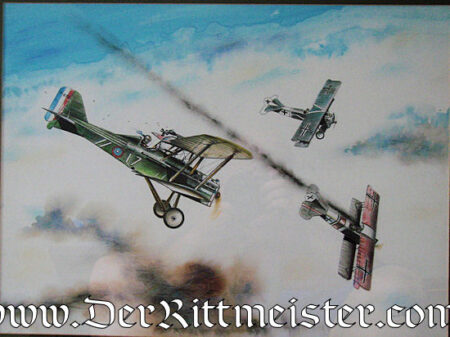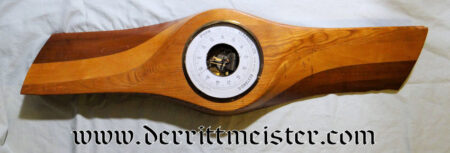Description
AIR SERVICE – GONG FOR OFFICER’S CASINO.
This is a most interesting cross between an Imperial German Air Service squadron’s gong and an intricate piece of trench art. It was intended to be used in an aviation unit Officers’ Casino (Club). All Officers’ Casinos, whether they were for the Infanterie, Kavallerie, Artillerie, Imperial German Air Service or other military units, were intended as a retreat for their officers where they could relax and enjoy companionship off-duty.
[Please note: Air Squadron Officers’ Casinos were far more informal and relaxed than those of other military units. For one thing, they were closer to the Front. The other regiments’ more formal casinos, which existed prior to WWI, were located in the cities wherein each regiment was garrisoned. The Air Squadrons’ informality also may have been a by-product of aviation’s high casualty rates. Pilots and observers were killed in action or taken prisoner so frequently that their squadron mates could hardly keep up with the constant turnover of personnel. Some of the Air Squadron Casinos were the scene of riotous parties and drinking bouts as surviving officers tried to calm their nerves, mourned the loss of their friends, and tried to forget that they might suffer the same fate during their next mission. Front-line squadrons, especially the hunting squadrons known as Jastas, had severe attrition rates. Replacement pilots who had not gained sufficient dogfighting skills were feasted on by the enemy. A significant number of pilots did not last beyond their first five missions].
A gong like this was probably used to gain the pilots’ attention for announcements, and so on. The gong sits upon a dark-brown wooden base that measures 1″ x 6″ x 10.” The base is stepped, giving it a professional appearance. Two small wooden blocks that serve as a resting place for the gong’s striking mallet sit toward the base’s front. They are set 4 ” apart. The mallet itself is constructed from two deactivated bullets that are joined together at their brass bottoms. It is 6 ½” in length. The pointed ends of the lead projectiles snuggle into the small wooden blocks. It is a very clever arrangement.
The gong itself is an artillery shell casing. As a matter of fact, I believe it is a French artillery shell. The casing’s base is marked “7.5cm.” That measurement translates to “75mm,” which is the size of France’s Model 1897 Cannon. [It was an amazing cannon. A recoilless model, it allowed shot after shot to be fired without having to reset the cannon due to the blowback. A well trained Model 1897 Cannon’s crew could fire up to thirty rounds a minute! Around 12,000 French 75’s were in use during WW I, and many of them were still in use when WW II began. The French 75mm also was used by U.S. Forces. Future U.S. President Harry S. Truman was a WW I battery commander whose unit operated the famous French 75]. The casing stands 5″ tall and measures 3″ in diameter. It hangs down from a brass cradle in which it swings freely. The cradle is constructed of a U-shaped brass pipe that sports a bar across its top to which the casing itself is attached. Another bullet tip has been neatly soldered onto the top bar’s center. The purpose for the latter becomes crystal clear when one examines the brass biplane that sits atop it. Yes, the airplane’s body is made from yet another bullet complete with its projectile! The plane’s wings, elevators, and rudder are all fashioned from bits of brass, as are its wheels and a landing gear assembly. A free-turning propeller is attached to the bullet casing’s end. A small hole has been drilled into the bottom wing, allowing the airplane to pivot atop the bullet tip attached to the cradle’s top.
The entire display was fashioned in a workshop that possessed wood AND metal-working capabilities in order to complete such a truly amazing presentation. It is, my dear readers, the ultimate trench art piece. Its creator took the time to put together an object that was useful and beautiful. Imagine, if you will, the Squadron or Jasta commander walking into the officer’s casino and striking this gong to gain his officers’ attention. This would look marvelous on your bar or in your man (or lady) cave!









